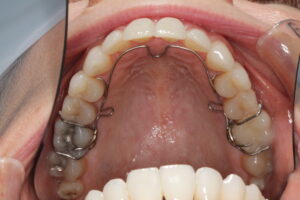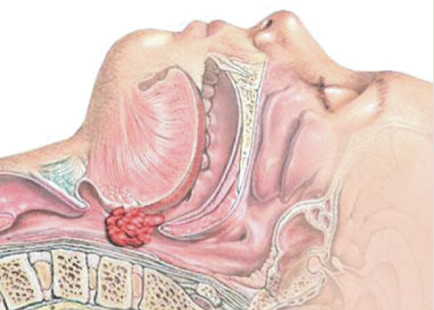ALF treats collapsed nasal valve – but what’s a collapsed nasal valve?
NASAL VALVE INSUFFICIENCY
The collapse of the internal nasal valves during inhalation reduces air flow through the nose, and increases the amount of pressure needed by the chest to overcome that limited inspiration. Nasal valve insufficiency looks like this:

Many ENTs will treat internal nasal valve insufficiency using a surgical procedure that stiffens the inside of the nose.
But in our dental practice, we look for the root cause of such collapse. In a great majority of the patients, we find that but pushing the tongue firmly against the roof of the nose, the nasal valve insufficiency seems to go away.
NASAL BREATHING IN ANKYLOGLOSSIA
People with ankyloglossia (tongue tie) do not have good nasal breathing support. We have also found it difficult to achieve proper nasal breathing even in people who can position their tongues to roof of mouth.
ALF AS A SURROGATE TONGUE
An ALF (alternative lightwire functional) appliance is a super thin, flexible wire custom-bent to fit the roof of the mouth and upper teeth. Once activated, there is a very gentle pressure across the palate that comes from the wire. This pressure is just enough to support the floor of the nose, decrease the turbulence of nasal air flow, and prevent collapse of the internal nasal valves. And in patients whose tongue tissues will allow it, there is an improved relationship between the posterior tongue and soft palate, which supports the entire airway.


